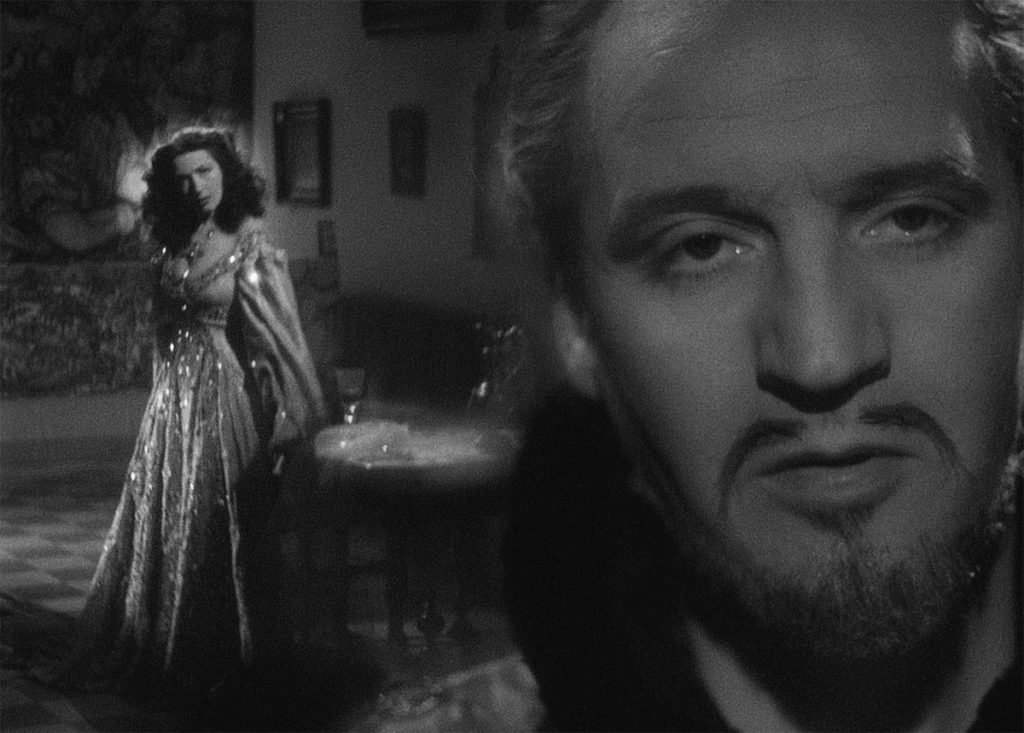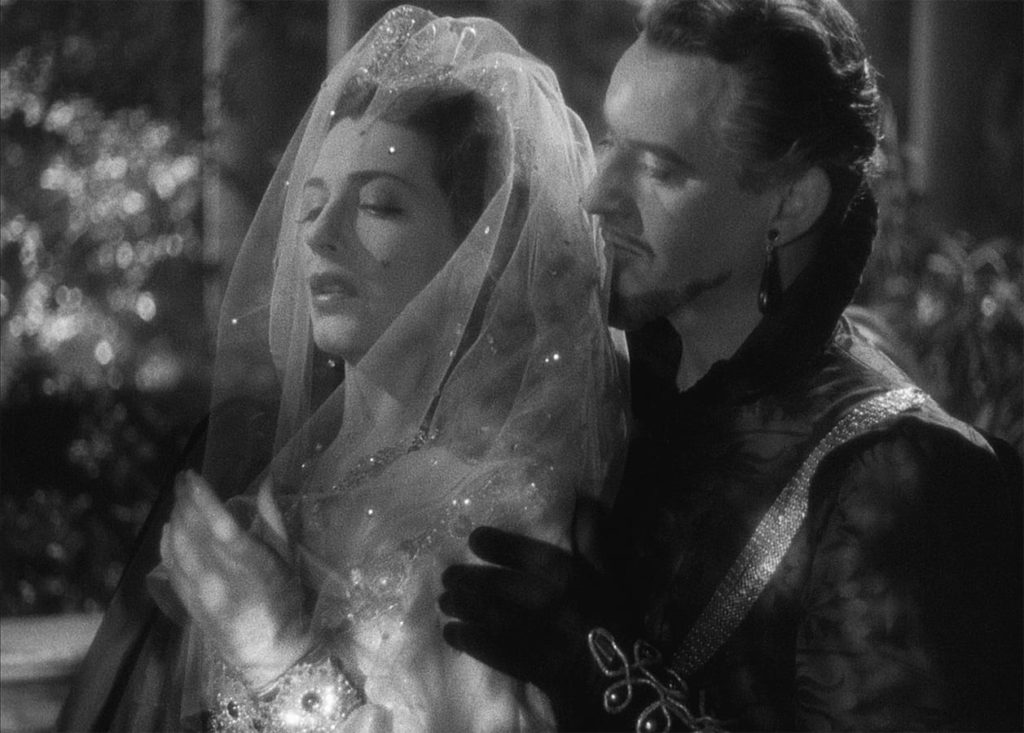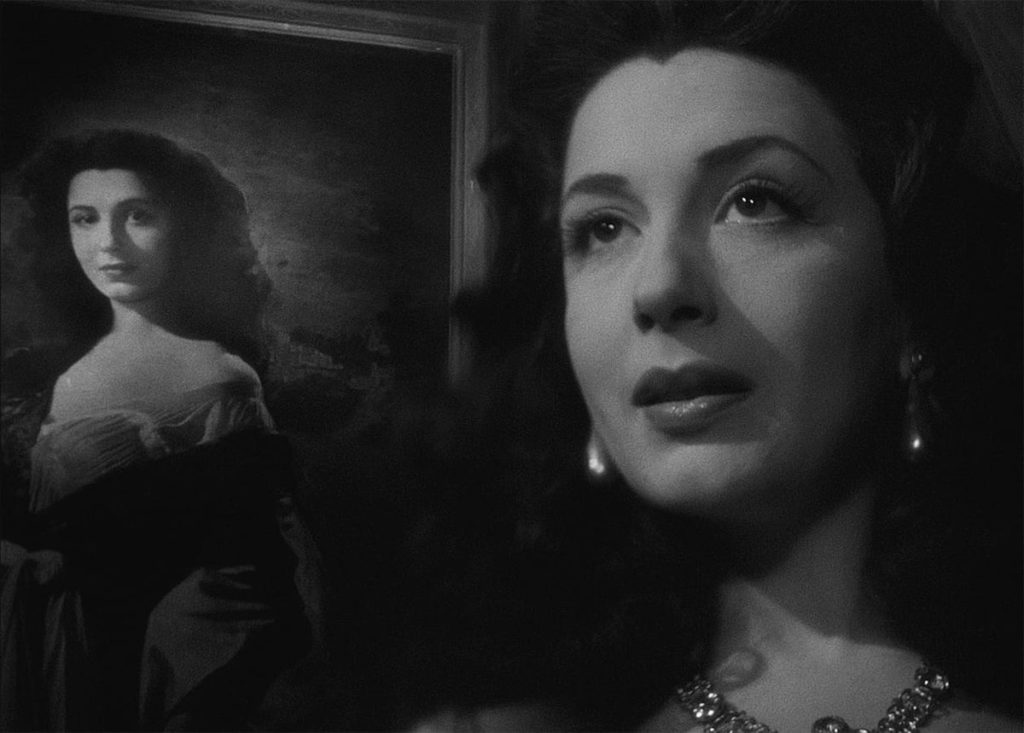James Bond Director Terence Young’s Debut Feature Looks Back in Mystery
DIRECTED BY TERENCE YOUNG/1948
BLU-RAY STREET DATE: OCTOBER 19, 2021/COHEN FILM COLLECTION

The time has come to reflect on the reflective. They’re found in most every home. Though we might not like what see in them, we can rarely resist the gaze. These shiny, silver, delicate flat surfaces can show us not only ourselves, but visions of the past.
Yes, DVDs sure are great. The younger set might not appreciate them the way the rest of us once did, but more often than not, that’s to their detriment. Consider the nearly insurmountable wealth of bonus features that accompanied each and every James Bond movie. Multiple custom documentaries and expert commentaries the likes of which are becoming increasingly streamed away into obscurity.
It was with one such 007 commentary that I learned about the premiere Bond film director, Terence Young. Though his moniker assured him of being indeed forever Young, the filmmaker was no spring chicken by the time he helmed 1962’s Dr. No. Young, we are told, had long been a style-savvy man of the world; sophisticated and dashing. His continental knowledge of the finer things was impeccable- and directly passed on to the Connery screen incarnation of Ian Fleming’s pulp Cold War super-spy. Even now, as much has changed and broadened in terms of what a Bond movie can be (see the very recent No Time to Die for confirmation), the qualities that Young initially imbued are among the enduring character’s remaining original aspects.
Spinning up a DVD of Dr. No in the very late 1990s was, even then, akin to a crisp and vivid portal into a thoroughly bygone past. Nowadays, doing so is doubly nostalgic, insofar as DVDs themselves have been rendered passé for so long that their inevitable retro comeback is likely only minutes away. (Step aside, VHS… again). But of course, rumors of the format’s demise has been greatly exaggerated. Those of us who dutifully review discs understand their enduring value… even as they too change and evolve. (It is said, alas, that one day, they will rot and play no more. I’ve yet to encounter this on any kind of scale). DVDs are tangible, increasingly boutique, and part of an era-gone-by that is a gateway to further eras gone by. A kind of living Madame Tussaud’s wax museum for the home.

Cohen Media’s new Blu-ray release of Terence Young’s 1948 impossibily lavish British enigma Corridor of Mirrors essentially begins on that very place: Madame Tussaud’s London famed waxworks. More specifically, the macabre gallery of notorious and famous prisoners sentenced to death. (An area of the venerable attraction that, if was ever real, has apparently been long supplanted with selfie-friendly areas of Marvel super heroes and the stars of Star Wars). There, at the center of the medieval menaces and torture recreations, stands the unblinking effigy of one Paul Mangin, nobleman of wealth beyond measure. An elite obsessive with an unhealthy dialing to the distant past. But now, he is dead.
The statue, frozen there in its place of gruesome prominence, is gazed upon by his last and most significant lover, the somnambulistic but beautiful wife of another man and mother, Mifanwy Conway, as played by the film’s co-writter, Edana Romney. From here, the mirrors become increasingly more literal, as Corridor of Mirrors becomes, for the most part, her fairy-tale-gone-wrong flashback.
Powell and Pressburger actor Eric Portman plays Mangin with magnificence and class to spare. He is stately and attractive, but never without an air of unease. Mangin, convinced that his new love Mifanwy, is his destined lover of 400 years ago, throws her an Old World party to prove his devotion. He’s got the castle for it, sumptuously cavernous and torch-lit, with no ornate flourish spared. The soirée, with its masked ballroom stocked with more than a touch of the commedia dell’arte, is a degree of pomp with circumstance to burn. Caped, trimmed, and cutting a seductively devilish silhouette, it’s evident that Young’s propensity for the elegance spans far deeper than his utterly contemporary James Bond. Young, like Mangin, had to have been a particular man for all seasons in order to pull this off.

And pull it off Young does; we’ll enough, anyhow. As beautiful and a-glow as the dreamlike black and white Corridor of Mirrors is, it’s soul is, to its minor detriment, never any closer than arm’s length. Even as Mangin pulls back the curtain to present his grand reveal- squarely placing Mifanwy, unbeknownst to her, in the 400-years-ago past- what should be the hook of the piece feels instead like a pulse being detected at long last. As utterly gorgeous and admirable as this film is, it’s all the more apt to ask “why?” As in, why is Corridor of Mirrors merely good and not great?
The answer lies, no doubt, in experience. Corridor of Mirrors is, in fact, Terence Young’s first directorial effort. By that metric, the film improves all the more… if only slightly. If a presumed journeyman such as Young can qualify for an auteur focus on only the basis of a handful of his films (indulge me here further, if you will), Corridor of Mirrors bears the reflection of a maker with particularly precise sensibilities. For Mangin and his romanticized mania, not a stitch is out of place. For Mifanwy- wined, dined, and made to shine- the way her final ball gown has slid off her breast, revealing the bunched under-layer, proves to be not a blooper, is a vital detail in Mangin’s run-up to his destiny of doom.
You see, if Mifanwy did in fact live 400 years ago- in exact appearance right down to the breast in said bunched under-layer, as she rendered is in the centuries-old painting he’s smitten with- then he is right- she has at long last made herself known. The staggered images of the pair dancing across Mangin’s ornate titular mirror corridor is an on-the-nose metaphor for the whole off-kilter situation. The catch is that there’s more to the legend… Fatally more. It’s enough to trigger a here-and-now meltdown at Madame Tussaud’s for Mifanwy, allowing the film to go out with a set piece of real intrigue.

Now is the time to admire the work that Cohen Media Group has done in presenting this remarkably-shot film in all of its gauzian splendor. Restored and now available on Blu-ray (that better, smarter big brother of DVD), Corridor of Mirrors has emerged from obscurity an apt curio. Not only is it significant for being Terence Young’s first film, it’s also legendary actor Christopher Lee’s first film. Lee plays the small part of Charles- whoever that is. So no, Lee is not exactly memorable here, but he is here, in preparation of his eventual Eurocrypt of greatness.
The company blurb states that this most atypical British film of its time “incorporates aspects of gothic horror, film noir, melodrama, fantasy, romance and thrillers”. That’s not wrong. What’s extra unfortunate then, is the complete lack of bonus features on this disc. Having Young’s career and interests contextualized without having to resort to hazy memories of a James Bond DVD commentary would’ve been particularly appreciated. Corridor of Mirrors is not an unimportant film, warranting an expert or two’s observations. That there’s nothing of the sort jarringly points to the belt-tightening reality that DVD-based physical media, in all their great evolutions, are slipping away into the past. It makes viewing Corridor of Mirrors this way it’s own little corridor of mirrors- looking to a passing format to veiw a past movie that dwells staunchly on the past. Much of what we see is what we bring to it.

